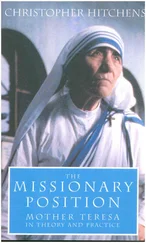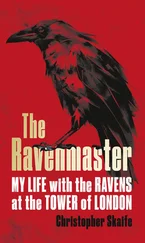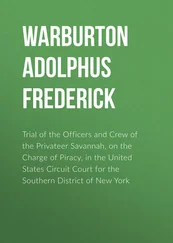But Revelation has endured in an age of technology and skepticism. Not many works of literature, not even the Odyssey of Homer, can boast such wide appeal over such an expanse of time. One celebrated case of this rugged durability is that of William Miller, the nineteenth-century farmer who became a prophet and made a set of intricate calculations, based on a line in verse 14 of the Book of Daniel: “unto two thousand and three hundred days; then shall the sanctuary be cleansed.” Counting for various reasons this utterance to date from 457 B.C., and understanding one prophetic day to be the equivalent of a year, Miller came to the conclusion that the last of days would occur in 1843. Some of Miller’s followers refined the calculations further to October 22. After nothing happened on that day, the year was quickly revised to 1844, to take into account the year zero. The faithful Millerites gathered in their thousands to wait. One may not share the beliefs, but it is quite possible to understand the mortifying disenchantment. One eyewitness wrote,
[We] confidently expected to see Jesus Christ and all the holy angels with him… and that our trials and sufferings with our earthly pilgrimage would close and we should be caught up to meet our coming Lord… and thus we looked for our coming Lord until the bell tolled twelve at midnight. The day had then passed and our disappointment became a certainty. Our fondest hopes and expectations were blasted, and such a spirit of weeping came over us as I never experienced before. It seemed that the loss of all our earthly friends could have been no comparison. We wept, and wept, till the day dawned.
One means of dealing with the disillusionment was to give it a title—the Great Disappointment—duly capitalized. More importantly, according to Kenneth Newport’s impressive new account of the Waco siege, the very next day after the Disappointment, one Millerite leader in Port Gibson, New York, by the name of Hiram Edson had a vision as he walked along, a sudden revelation that “the cleansing of the sanctuary” referred to events not on earth, but in heaven. Jesus had taken his place in the heavenly holy of holies. The date had been right all along, it was simply the place they had got wrong. This “masterstroke,” as Newport calls it, this “theological lifeline” removed the whole affair into a realm immune to disproof. The Great Disappointment was explained, and many Millerites were drawn, with hope still strong in their hearts, into the beginnings of the Seventh Day Adventist movement—which was to become one of the most successful churches in the United States.
In passing, I note the connections between this church and the medieval sects that Cohn describes—the strong emphasis on the Book of Revelation, the looming proximity of the end, the strict division between the faithful remnant who keep the Sabbath, and those who join the ranks of the “fallen,” of the anti-Christ, identified with the Pope whose title, Vicarius Filii Dei (vicar of the son of God) apparently has a numerical value of 666.
I mention Hiram Edson’s morning-after masterstroke to illustrate the adaptability and resilience of end-time thought. For centuries now, it has regarded the end as “soon”—if not next week, then within a year or two. The end has not come, and yet no one is discomfited for long. New prophets, and soon, a new generation, set about the calculations, and always manage to find the end looming within their own lifetime. The million sellers like Hal Lindsey predicted the end of the world all through the seventies, eighties, and nineties—and today, business has never been better. There is a hunger for this news, and perhaps we glimpse here something in our nature, something of our deeply held notions of time, and our own insignificance against the intimidating vastness of eternity, or the age of the universe—on the human scale there is little difference. We have need of a plot, a narrative to shore up our irrelevance in the flow of things.
In The Sense of an Ending , Frank Kermode proposes that the enduring quality, the vitality of the Book of Revelation suggests a “consonance with our more naïve requirements of fiction.” We are born, as we will die, in the middle of things, in the “middest.” To make sense of our span, we need what he calls “fictive concords with origins and ends. ‘The End,’ in the grand sense, as we imagine it, will reflect our irreducibly intermediary expectations.” What could grant us more meaning against the abyss of time than to identify our own personal demise with the purifying annihilation of all that is. Kermode quotes with approval from Wallace Stevens—“the imagination is always at the end of an era.” Even our notions of decadence contain the hopes of renewal; the religious minded as well as the most secular, looked on the transition to the year two thousand as inescapably significant, even if all the atheists did was to party a little harder. It was inevitably a transition, the passing of an old age into the new—and who is to say now that Osama bin Laden did not disappoint, whether we mourned at the dawn of the new millennium with the bereaved among the ruins of lower Manhattan, or danced for joy, as some did, in the Gaza Strip.
Islamic eschatology from its very beginnings embraced the necessity of violently conquering the world and gathering up souls to the faith before the expected hour of judgment—a notion that has risen and fallen over the centuries, but in past decades has received new impetus from Islamist revivalist movements. It is partly a mirror image of the Protestant Christian tradition (a world made entirely Islamic, with Jesus as Mohammed’s lieutenant), partly a fantasy of the inevitable return of “sacred space,” the Caliphate, that includes most of Spain, parts of France, the entire Middle East, right up to the borders of China. As with the Christian scheme, Islam foretells of the destruction or conversion of the Jews.
Prophecy belief in Judaism, the original source for both the Islamic and Christian eschatologies, is surprisingly weaker—perhaps a certain irony in the relationship between Jews and their god is unfriendly to end-time belief, but it lives on vigorously enough in the Lubavitch movement and various Israeli settler groups, and of course is centrally concerned with divine entitlement to disputed lands.
We should add to the mix more recent secular apocalyptic beliefs—the certainty that the world is inevitably doomed through nuclear exchange, viral epidemics, meteorites, population growth, or environmental degradation. Where these calamities are posed as mere possibilities in an open-ended future that might be headed off by wise human agency, we cannot consider them as apocalyptic. They are minatory, they are calls to action. But when they are presented as unavoidable outcomes driven by ineluctable forces of history or innate human failings, they share much with their religious counterparts—though they lack the demonizing, cleansing, redemptive aspects, and are without the kind of supervision of a supernatural entity that might give benign meaning and purpose to a mass extinction. Clearly, fatalism is common to both camps, and both, reasonably enough, are much concerned with a nuclear holocaust, which to the prophetic believers illuminates in retrospect biblical passages that once seemed obscure. Hal Lindsey, preeminent among the popularizers of American apocalyptic thought, writes,
Zacheriah 14:12 predicts that “their flesh will be consumed from their bones, their eyes burned out of their sockets, and their tongues consumed out of their mouths while they stand on their feet.” For hundreds of years students of Bible prophecy have wondered what kind of plague could produce such instant ravaging of humans while still on their feet. Until the event of the atomic bomb such a thing was not humanly possible. But now everything Zacheriah predicted could come true in a thermonuclear exchange!
Читать дальше












